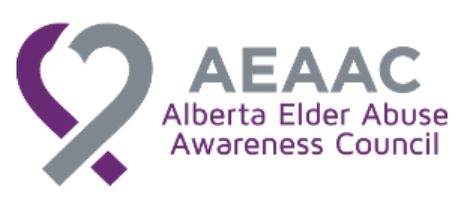- Details
- Published: 02 November 2016
As we enter Financial Literacy Month (FLM) 2016, I want to draw attention to a topic I believe warrants closer attention in Canada’s financial literacy strategy. Financial literacy strategies in Canada currently pursue three specific goals in order to improve the financial literacy and financial health of Canadians of all ages. This strategy includes a focus on teaching Canadians to 1) manage debt wisely; 2) save for the future and, 3) understand their rights and responsibilities. I certainly strongly support the current focus on improving financial health using these steps. However, recent research is increasingly suggesting that a lack of financial literacy doesn’t just have consequences for our financial health. A lack of financial literacy can also have serious consequences for our emotional, psychological, and functional/physical health in a number of ways, particularly with respect to the health consequences associated with financial mistreatment and abuse. While people of all ages can experience financial mistreatment and fraud, and the resulting negative health outcomes, the research suggests the health consequences are particularly damaging for older adults.
For example, as discussed in my previous blog, a study this year of financial abuse and mortality rates revealed that while financial abuse accounted for only 9% of the 1,670 substantiated cases of elder abuse in the study, financial abuse was correlated with the second highest percentage of deaths at 28%. The results of this important study have received strong support from a study also released this year in the Journal of Elder Abuse & Neglect (Elder mistreatment predicts later physical and psychological health: Results from a national longitudinal study; Wong & Waite, 2016)1. These authors also studied the potential impact(s) of financial abuse of older adults over a five-year period, and report they are the first study to date that has been able to empirically document a strong relationship “between the experience of financial mistreatment and declining functional health” (p. 22).
The authors measured the functional health of the older adults in the study by utilizing the six basic ADLs of eating, bathing, dressing, toileting, transferring (walking) and continence. The results of the study clearly suggest that financial mistreatment by both relatives and non-relatives can have serious consequences for the long-term health of older adults. More specifically, older adults financially abused by relatives experienced 2.04 times the number of difficulties with ADLs as those experienced by non-victims, while those financially abused by non-relatives experienced 2.57 times the number of difficulties. Given the importance of maintaining ADLs in order to live independently, the authors suggest that financial mistreatment of older adults very likely “reduces the possibility of independent living in late life” (p. 23), which damages the quality of life for older adults and increases the overall health care costs for an aging population.
While the authors note that it is possible to increase services to treat the psychological and physical symptoms of financial mistreatment, clearly the most desirable and effective solution lies in the prevention of financial abuse in the first place. And it is here that financial literacy strategies can play a critically important role. Efforts already in place to improve older adults’ understanding of the dangers of POAs and joint bank accounts and the misuse of PIN numbers will, of course, continue to assist in reducing instances of financial abuse, as will existing scam prevention strategies. However, efforts in these areas can continue to be improved with the use of recent research. Two 2016 studies, in particular, could be effectively utilized to develop additional financial literacy training for older adults focused on the prevention of financial abuse. “Tricks of the trade: Motivating sales agents to con older adults” published in the Gerontologist this past September, and “Exploring the boundaries between interpersonal and financial institution mistreatment of older people through a social ecology framework” published in Ageing & Society earlier this year, focus on how to help older adults resist persuasion and high-pressure sales tactics in order to avoid purchasing fraudulent or unnecessary products. These studies strongly suggest that older adults can benefit from additional training on how to identify and resist unscrupulous sales techniques such as lying and excessive claims for product legitimacy, and strong sales persuasion tactics such as rapport building and emotional arousal techniques.
However, given the mounting evidence that financial abuse seriously undermines functional health and increases mortality for older adults, I believe financial literacy training in Canada must also incorporate modules that specifically address and present the serious health consequences of financial abuse. These modules can be designed with specific populations in mind including older adults themselves, health care practitioners, Canadian businesses, and perhaps most importantly, individuals who are working with the development of age-related policy in Canada. Given the rapid aging of Canada’s population, the health consequences of financial abuse and mistreatment for older adults are too serious to ignore.
[1] The study utilized data from the longitudinal study - American National Social Life Health and Aging Project (NSHAP) - to explore financial abuse with 2,261 adults with an average age of 73. The authors found that 5.8% of the respondents reported experiencing financial mistreatment.
References
Burnett, J., Jackson, S., Sinha, A., Aschenbrenner, A., Murphy, K., Xia, R., & Diamond, P. Five-year all-cause mortality rates across five categories of substantiated elder abuse occurring in the community. Journal of Elder Abuse & Neglect, 28(2), 59-75.
DeLiema, M., Yon, Y., & Wilber, K. (2016). Tricks of the trade: Motivating sales agents to con older adults. The Gerontologist, 56(2), 335-344.
Naughton, C., & Drennan, J. (2016). Exploring the boundaries between interpersonal and financial institution mistreatment of older people through a social ecology framework. Ageing & Society, 36, 694-715.
Wong, J., & Waite, L. (2016). Elder mistreatment predicts later physical and psychological health: Results from a national longitudinal study. Journal of Elder Abuse & Neglect, DOI: 10.1080/08946566.2016.1235521
















